How to Navigate Exchange Features - A Beginner's Guide
Welcome to the world of cryptocurrency trading! If you're just stepping into this fascinating arena, it might feel a bit overwhelming at first. But don't worry—this guide is designed to help you understand the essential features of exchanges and how to make the most of them. Think of this as your treasure map; each section is a step towards mastering the art of trading, ensuring that you can navigate your chosen platform with confidence and ease.
Before diving into the nitty-gritty of trading, it's crucial to get familiar with the different types of exchanges available. The three primary categories are centralized exchanges (CEX), decentralized exchanges (DEX), and hybrid platforms. Each of these has its own set of unique features, benefits, and drawbacks. For instance, centralized exchanges tend to offer a user-friendly interface and high liquidity, making them ideal for beginners. However, they also come with risks such as hacking and regulatory scrutiny. On the other hand, decentralized exchanges provide greater privacy and control over your funds but can be less intuitive to use. Understanding these differences will help you make an informed choice about where to trade.
Setting up an account on an exchange is your first step towards trading. The registration process is usually straightforward but requires careful attention to detail. You'll need to provide some personal information and may also be asked to verify your identity. This is not just a formality; it’s a crucial step in protecting your assets. Think of it as putting a lock on your treasure chest. Security measures, such as two-factor authentication (2FA), are essential to safeguard your account. This adds an extra layer of protection, ensuring that only you can access your funds.
Most exchanges require users to undergo a verification process, which typically involves submitting identification documents. This can include your passport, driver's license, or even a utility bill for proof of address. The steps are generally as follows:
- Fill out the registration form on the exchange's website.
- Upload the required identification documents.
- Wait for the exchange to review and approve your application.
While it may seem tedious, this process is designed to protect both you and the exchange from fraud and illicit activities.
When preparing your documents, ensure you have the following forms of identification ready:
- Government-issued ID: A passport or driver's license is typically accepted.
- Proof of Address: A recent utility bill or bank statement with your name and address.
- Selfie Verification: Some exchanges may require you to take a selfie holding your ID.
Having these documents on hand can speed up the verification process, allowing you to start trading sooner.
Security should be your top priority when trading cryptocurrencies. Besides using 2FA, consider these additional measures:
- Strong Passwords: Use a combination of letters, numbers, and symbols.
- Withdrawal Whitelists: Set up a whitelist of addresses to which you can withdraw funds.
- Regular Monitoring: Keep an eye on your account for any suspicious activity.
By taking these precautions, you can significantly reduce the risk of losing your assets.
Choosing the right wallet for storing your cryptocurrency is crucial. There are two primary types of wallets: hot wallets and cold wallets. Hot wallets are connected to the internet and are convenient for trading, while cold wallets are offline and provide enhanced security for long-term storage. Setting up a wallet is relatively simple, but it's important to choose one that fits your trading style. If you're frequently trading, a hot wallet may be more suitable, but for those who plan to hold their assets for a while, a cold wallet is the way to go.
Once you've registered, familiarizing yourself with the trading interface is essential. Most exchanges offer a dashboard that displays various features, including order types, charts, and trading pairs. Understanding these components will help you execute trades more effectively. It’s like learning to read a map before embarking on your journey. The more you know, the easier it will be to find your way.
Different order types, such as market and limit orders, serve various trading strategies. A market order allows you to buy or sell at the current market price, while a limit order lets you set a specific price at which you want to buy or sell. Knowing how to use these orders effectively can greatly enhance your trading outcomes.
Market charts provide a visual representation of price movements over time. Understanding how to read these charts and interpret indicators can inform your trading decisions. Look for patterns and trends; they can be the key to predicting future movements. Just like reading the stars to navigate the seas, reading charts can guide your trading journey.
Executing trades is the core function of exchanges. The process typically involves selecting your desired trading pair, choosing an order type, and entering the amount you wish to trade. Timing is crucial here; knowing when to enter or exit a trade can make a significant difference in your profitability. Think of it as a dance—timing and rhythm are everything!
Market orders allow traders to buy or sell at the current market price. They are often used when you want to enter or exit a position quickly. The process is straightforward: select the market order option, enter the amount, and hit 'confirm.' However, be cautious, as market orders can lead to slippage, especially in volatile markets.
Limit orders enable traders to set specific prices for buying or selling. This can be particularly useful for controlling trade execution and managing risk. By setting a limit order, you ensure that you don’t buy or sell at a price that’s unfavorable to you. It’s like setting a boundary in your garden—you control what comes in and what goes out.
Exchanges often charge fees for transactions, which can eat into your profits if you're not careful. Understanding the different types of fees, how they are calculated, and knowing how to minimize them is crucial for any trader. This knowledge can be the difference between making a profit or taking a loss.
Trading fees can vary significantly between exchanges, with some charging a flat fee and others using a tiered structure based on your trading volume. Always check the fee schedule before selecting a platform to ensure you’re not caught off guard. A little research here can save you a lot of money in the long run.
Withdrawal fees can also impact your overall profitability. These fees are charged when you transfer your funds out of the exchange to your wallet. Understanding how these fees work and employing strategies to reduce costs—like withdrawing during low-fee periods—can help you maximize your returns.
1. What is the difference between a centralized and decentralized exchange?
Centralized exchanges are operated by companies that facilitate trading, while decentralized exchanges allow users to trade directly with one another without an intermediary.
2. How do I secure my account?
Enable two-factor authentication, use strong passwords, and consider withdrawal whitelists to enhance account security.
3. What are market and limit orders?
Market orders buy or sell at the current market price, while limit orders allow you to set a specific price for buying or selling.
4. How can I reduce trading fees?
Choose exchanges with lower fees, and consider trading during promotional periods when fees may be waived.
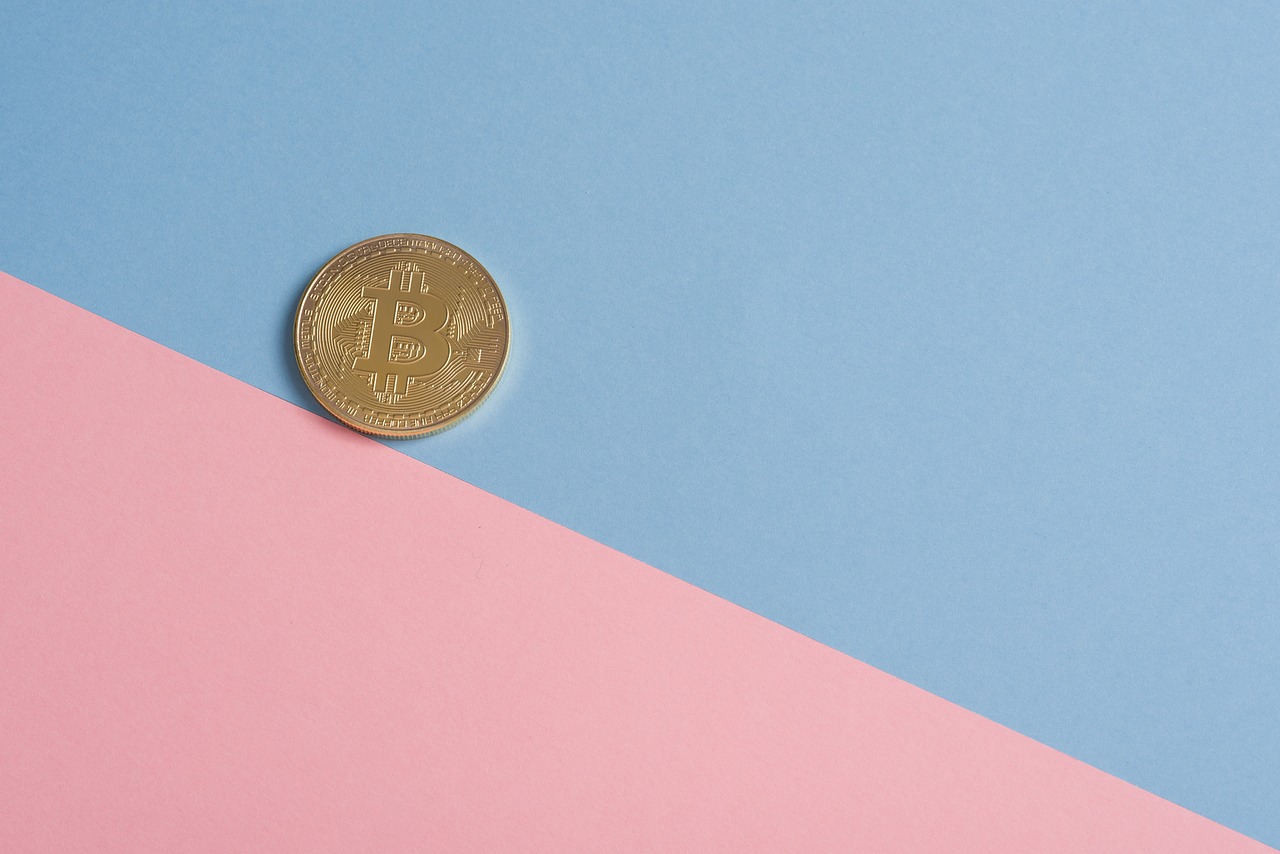
Understanding Exchange Types
When it comes to trading cryptocurrencies, understanding the different types of exchanges is crucial for any beginner. Think of exchanges as the bustling marketplaces of the digital currency world, each with its unique vibe, rules, and offerings. In essence, there are three primary types of exchanges: centralized exchanges (CEX), decentralized exchanges (DEX), and hybrid exchanges. Each of these platforms comes with its own set of features, benefits, and drawbacks that can significantly impact your trading experience.
Centralized exchanges are like traditional stock exchanges, where a central authority manages the platform. They offer a user-friendly interface, high liquidity, and a wide range of trading pairs. However, they also come with risks, such as the potential for hacks and the need to trust the exchange with your assets. Popular examples include Binance and Coinbase, which are favored for their ease of use and robust security measures.
On the flip side, decentralized exchanges operate without a central authority, allowing users to trade directly with one another. This peer-to-peer model enhances privacy and reduces the risk of hacks since users retain control of their funds. However, DEXs can be less user-friendly and may have lower liquidity compared to their centralized counterparts. Uniswap and SushiSwap are prominent examples in this space, often attracting users who prioritize anonymity and security.
Then there's the hybrid exchange, which combines elements of both centralized and decentralized exchanges. These platforms aim to provide the best of both worlds, offering the security and control of a DEX while maintaining the user-friendly features of a CEX. They are still relatively new but are gaining traction as traders look for more versatile options. Examples include Nash and Deversifi, which are designed to cater to a wide range of trading preferences.
| Exchange Type | Advantages | Disadvantages |
|---|---|---|
| Centralized Exchanges (CEX) |
|
|
| Decentralized Exchanges (DEX) |
|
|
| Hybrid Exchanges |
|
|
In conclusion, understanding the differences between centralized, decentralized, and hybrid exchanges is essential for making informed trading decisions. Each type has its own strengths and weaknesses, so consider your trading style, security preferences, and the level of control you desire before diving into the world of cryptocurrency trading. Whether you prioritize ease of use or security, there's an exchange out there that fits your needs perfectly.

Creating an Account
Setting up an account on a cryptocurrency exchange is your first step towards diving into the exciting world of trading. It’s like opening the door to a new realm where opportunities abound, but before you can start exploring, you need to ensure you have the right keys. The registration process might seem daunting at first, but it’s quite straightforward if you break it down into manageable steps. So, let’s walk through the essentials together!
First things first, you’ll need to choose an exchange that fits your trading style and needs. Once you've made your choice, head over to their website and look for the “Sign Up” or “Register” button. After clicking it, you’ll be prompted to fill in some basic information such as your email address, password, and sometimes even your phone number. It’s crucial to use a strong password here—think of it as your first line of defense against unwanted visitors. A combination of letters, numbers, and special characters is a good start.
Next, the exchange will likely ask you to verify your email address. This step is super important as it helps to confirm that you are indeed the owner of the email account you provided. Check your inbox for a verification email and click the link inside. Voila! You’re one step closer to trading.
After email verification, most exchanges will require you to go through an identity verification process, often referred to as KYC (Know Your Customer). This is where things get a bit more serious, as it involves submitting personal information to comply with regulations. You’ll typically need to provide:
- Your full name
- Date of birth
- Address
- Government-issued identification (like a passport or driver’s license)
Completing this step is crucial for maintaining a secure trading environment. It’s like showing your ID at a club before being allowed in—necessary for ensuring that everyone inside is who they say they are. Once you’ve submitted your documents, the exchange will review them, which can take anywhere from a few minutes to a couple of days, depending on their workload.
Now, let’s talk about security measures. With the rise of cyber threats, protecting your account is more important than ever. Most exchanges will offer two-factor authentication (2FA) as an option, and you should absolutely take advantage of it. This adds an extra layer of security by requiring a second form of identification, such as a code sent to your mobile device, every time you log in or make a transaction. Think of it as having a bouncer at the door of your trading club—only those with the right credentials get in.
Once your account is verified and secured, you’re ready to fund your account and start trading! But remember, the journey doesn’t end here. Always keep your login credentials safe and be cautious about phishing attempts. The world of cryptocurrency is thrilling but requires a vigilant approach to security.
Q: How long does it take to create an account?
A: Creating an account can take just a few minutes, but the verification process may take longer depending on the exchange and how quickly they review your documents.
Q: Do I need to provide my real name and information?
A: Yes, most exchanges require accurate personal information to comply with regulations and ensure a secure trading environment.
Q: Is two-factor authentication really necessary?
A: Absolutely! It significantly enhances your account security and helps protect your assets from unauthorized access.

Verification Processes
When you decide to dive into the world of cryptocurrency trading, one of the first hurdles you'll encounter is the verification process. This step is crucial for ensuring the security of both the exchange and its users. Think of it as a bouncer at a club, checking IDs to keep the environment safe and exclusive. Each exchange has its own set of requirements, but generally, they follow a standard procedure to verify your identity.
Most exchanges will require you to submit a form of identification, which can range from a government-issued ID to proof of address. This is not just a random request; it's a way to comply with regulations and prevent fraud. The verification process typically involves several stages:
- Identity Verification: You'll need to upload a clear image of your identification document. This could be your passport, driver’s license, or any other government-issued ID.
- Proof of Address: In addition to your ID, you'll likely need to provide a document that confirms your residence. This could be a utility bill, bank statement, or any official document that displays your name and address.
- Selfie Verification: Some exchanges take it a step further by asking for a selfie. This is to ensure that the person registering matches the ID provided. It’s a bit like a digital fingerprint!
Once you’ve submitted these documents, the waiting game begins. Typically, exchanges will notify you via email about the status of your verification. This can take anywhere from a few minutes to several days, depending on the exchange's workload and the accuracy of your submissions. If there are any issues, they will usually reach out to you for clarification or additional information.
It's important to note that while the verification process may seem tedious, it serves a significant purpose. By verifying your identity, exchanges can prevent fraudulent activities and ensure a safer trading environment for everyone involved. So, while it might feel like a hassle at first, think of it as a necessary step toward a more secure trading experience.
In summary, understanding the verification processes is vital for anyone looking to trade on an exchange. By being prepared with the necessary documents and understanding the steps involved, you can smooth out your entry into the world of cryptocurrency trading. After all, who wants to miss out on exciting trading opportunities just because they weren’t ready with their ID?
Q: How long does the verification process usually take?
A: The verification process can take anywhere from a few minutes to several days, depending on the exchange and the accuracy of the submitted documents.
Q: What happens if my verification fails?
A: If your verification fails, the exchange will typically contact you for more information or clarification. Make sure your documents are clear and up-to-date to avoid issues.
Q: Is it safe to provide my identification documents?
A: Yes, reputable exchanges use strong encryption and security measures to protect your personal information. Always choose well-known platforms to ensure your data is safe.
Q: Can I trade without verification?
A: Most exchanges require verification to comply with regulations. However, some platforms may allow limited trading without full verification, but this is generally not recommended.

Types of Identification
When it comes to trading on exchanges, one of the first hurdles you’ll encounter is the identification verification process. It’s like the bouncer at a club checking your ID before letting you in. Different exchanges have varying requirements, but generally, you’ll need to present a few key documents to prove your identity. This ensures not only the security of your account but also compliance with regulations aimed at preventing fraud and illegal activities.
Most exchanges accept several forms of identification. Here’s a quick breakdown of the most commonly accepted documents:
- Government-issued ID: This includes passports, driver’s licenses, or national ID cards. These documents typically have your photo, name, and date of birth, making them reliable proof of identity.
- Utility Bills: Sometimes, exchanges will ask for a recent utility bill or bank statement to verify your address. This document should display your name and current residence.
- Social Security Number (SSN): In some jurisdictions, you may need to provide your SSN for tax reporting purposes. This adds another layer of identity verification.
It’s essential to check the specific requirements of the exchange you choose, as they can vary significantly. For example, some platforms may only require a passport for identity verification, while others might ask for additional documents. The goal here is to streamline your experience and avoid any unnecessary delays in getting started with trading.
Additionally, keep in mind that the quality of the documents you submit matters. Ensure that the images are clear and legible. Blurry or poorly scanned documents can lead to rejection, which can be frustrating when you’re eager to start trading. It’s like trying to read a menu in a dimly lit restaurant—you want everything to be crystal clear so you can make informed choices.
In summary, understanding the types of identification required by exchanges is crucial for a smooth onboarding process. By preparing the necessary documents ahead of time, you can minimize delays and get right into the exciting world of cryptocurrency trading. Remember, the sooner you verify your identity, the sooner you can dive into trading!
Q: What if I don’t have a passport?
A: If you don’t have a passport, a government-issued driver’s license or national ID card is typically accepted. Just ensure it has your photo and name.
Q: How recent should my utility bill be?
A: Most exchanges require a utility bill that is no older than three months to ensure that your address is current.
Q: Can I trade before my identity is verified?
A: Generally, you will need to complete the identity verification process before you can start trading on most exchanges.
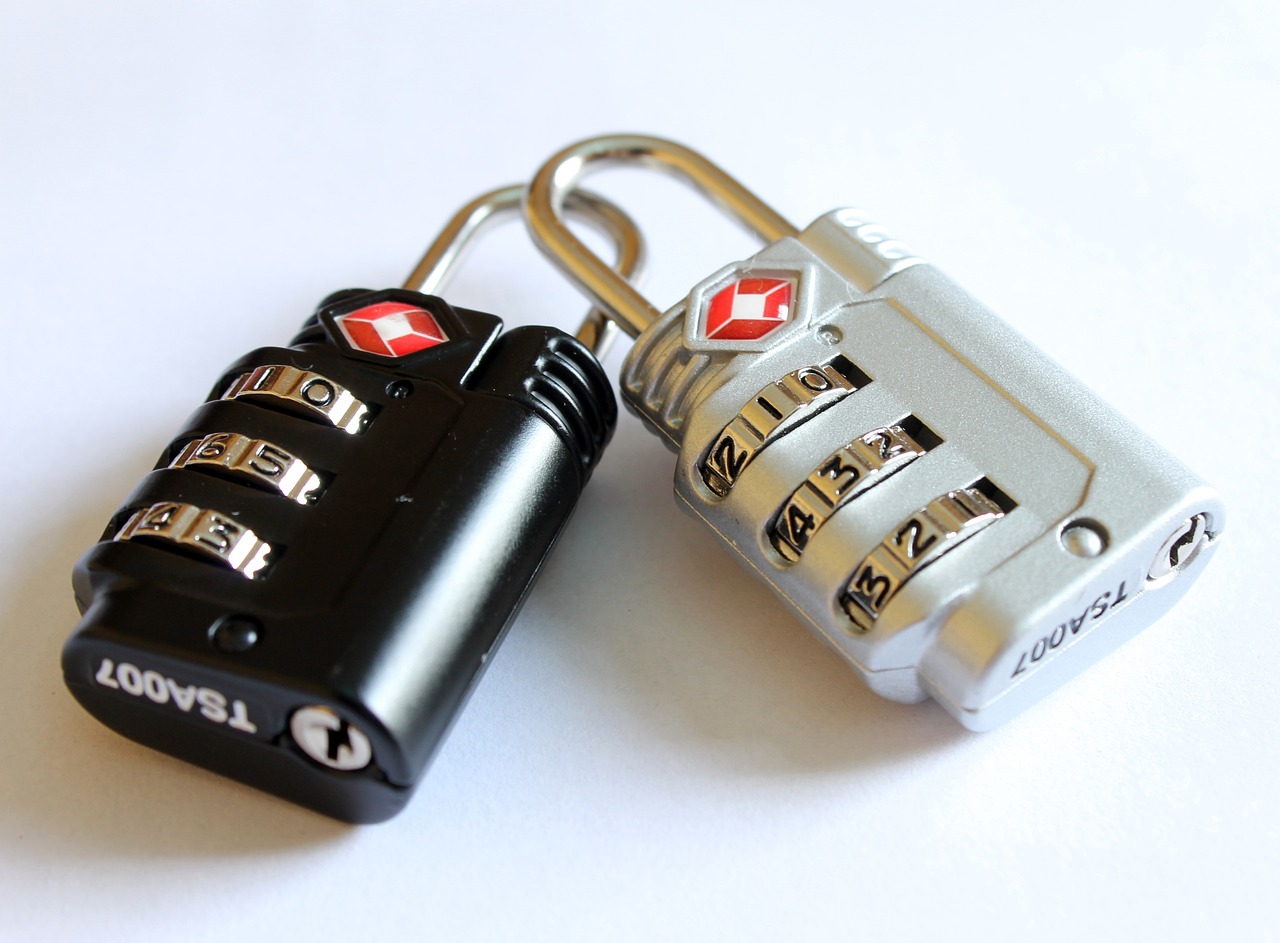
Security Measures
When it comes to trading on exchanges, security should always be your top priority. After all, you wouldn’t leave your front door wide open, would you? The same principle applies to your digital assets. To safeguard your investments, it’s essential to implement robust security measures that protect your account and personal information from potential threats.
One of the most effective ways to enhance your account security is by utilizing two-factor authentication (2FA). This feature adds an extra layer of protection by requiring not just your password, but also a second piece of information that only you possess, such as a code sent to your mobile device or generated by an authentication app. Imagine it as a double lock on your front door; it makes it significantly harder for intruders to gain access.
Additionally, be sure to regularly update your passwords. A strong password is your first line of defense against unauthorized access. Aim for a mix of uppercase letters, lowercase letters, numbers, and special characters. Think of your password as a secret recipe—if too many people know it, it loses its value. Consider using a password manager to keep track of your passwords securely, as this can help you create complex passwords without the hassle of remembering each one.
Another critical aspect of security is being aware of phishing attempts. Scammers often try to trick users into providing their login details through fake emails or websites. Always verify the authenticity of any communication you receive regarding your exchange account. If something seems off, trust your instincts and double-check before taking any action. It’s like receiving an unexpected letter from a "long-lost relative" asking for money—be cautious!
Finally, consider utilizing cold wallets for long-term storage of your cryptocurrency. Unlike hot wallets, which are connected to the internet and more vulnerable to attacks, cold wallets store your assets offline, making them significantly safer. It's akin to putting your valuables in a safety deposit box rather than leaving them on your kitchen counter. While hot wallets are convenient for trading, cold wallets are ideal for holding your assets securely over time.
In summary, prioritizing security measures is crucial when navigating exchange features. By implementing two-factor authentication, regularly updating your passwords, being vigilant against phishing scams, and utilizing cold wallets for storage, you can protect your investments and trade with confidence.
- What is two-factor authentication (2FA)?
2FA is a security process that requires two different forms of identification before granting access to your account, enhancing protection against unauthorized access.
- How can I create a strong password?
A strong password should include a mix of uppercase letters, lowercase letters, numbers, and special characters. Avoid using easily guessable information like birthdays or common words.
- What are cold wallets?
Cold wallets are offline storage solutions for cryptocurrencies, making them less vulnerable to hacking and theft compared to online wallets.
- How can I identify phishing attempts?
Always check the sender's email address, look for spelling errors, and avoid clicking on suspicious links. If in doubt, visit the official website directly.

Setting Up Wallets
When diving into the world of cryptocurrency, selecting the right wallet is a crucial step that can significantly impact your trading experience. Think of a wallet as your personal vault; it’s where you store your digital assets securely. There are two main types of wallets you should be aware of: hot wallets and cold wallets. Each type has its own set of advantages and disadvantages, making it essential to choose one that aligns with your trading habits and security needs.
Hot wallets are connected to the internet, making them incredibly convenient for frequent trading. They allow you to access your funds quickly and easily, which is perfect for those who want to capitalize on market movements. However, this convenience comes at a cost—hot wallets are more vulnerable to hacking and cyber threats. Popular examples include web-based wallets and mobile apps, which are user-friendly but require a good security practice to keep your assets safe.
On the other hand, cold wallets are offline storage solutions that provide an extra layer of security. These wallets are not connected to the internet, which means they are less susceptible to hacking attempts. Cold wallets can come in various forms, including hardware wallets and paper wallets. While they are less convenient for frequent transactions, they are ideal for long-term investors who want to store their cryptocurrencies securely. For instance, a hardware wallet like the Trezor or Ledger can be a great choice for safeguarding your assets.
Setting up a wallet typically involves a few straightforward steps. First, you’ll need to choose the type of wallet that best suits your needs. Once you've made a decision, follow these general steps to get started:
- Download the wallet software: For hot wallets, download the app or software from the official website. For cold wallets, purchase a hardware wallet from a reputable source.
- Create an account: For hot wallets, you may need to create an account. This usually involves providing an email address and setting a strong password.
- Backup your wallet: Most wallets will prompt you to back up your wallet. This is crucial! Write down your recovery phrase and store it in a secure location.
- Secure your wallet: Enable two-factor authentication (2FA) if available, and consider additional security measures like using a strong, unique password.
After your wallet is set up, you can start transferring cryptocurrency into it. This process typically involves generating a wallet address from your wallet application, which you can then use to receive funds from exchanges or other wallets. Always double-check the address before sending any assets, as transactions in the crypto world are irreversible.
In summary, setting up a wallet is a fundamental step in your cryptocurrency journey. Whether you opt for a hot wallet for quick access or a cold wallet for enhanced security, understanding the features and functionalities of each type will help you make informed decisions. Remember, the safety of your digital assets largely depends on how well you manage your wallet. So, take the time to choose wisely and implement strong security practices!
1. What is the difference between a hot wallet and a cold wallet?
Hot wallets are connected to the internet and are convenient for frequent transactions, while cold wallets are offline and provide enhanced security for long-term storage.
2. How do I secure my hot wallet?
To secure your hot wallet, use strong passwords, enable two-factor authentication, and regularly update your software to protect against vulnerabilities.
3. Can I use multiple wallets?
Absolutely! Many traders use a combination of hot and cold wallets to balance convenience and security based on their trading strategies.
4. What should I do if I lose access to my wallet?
If you’ve backed up your wallet with a recovery phrase, you can restore access by using that phrase. Always keep it safe and secure!
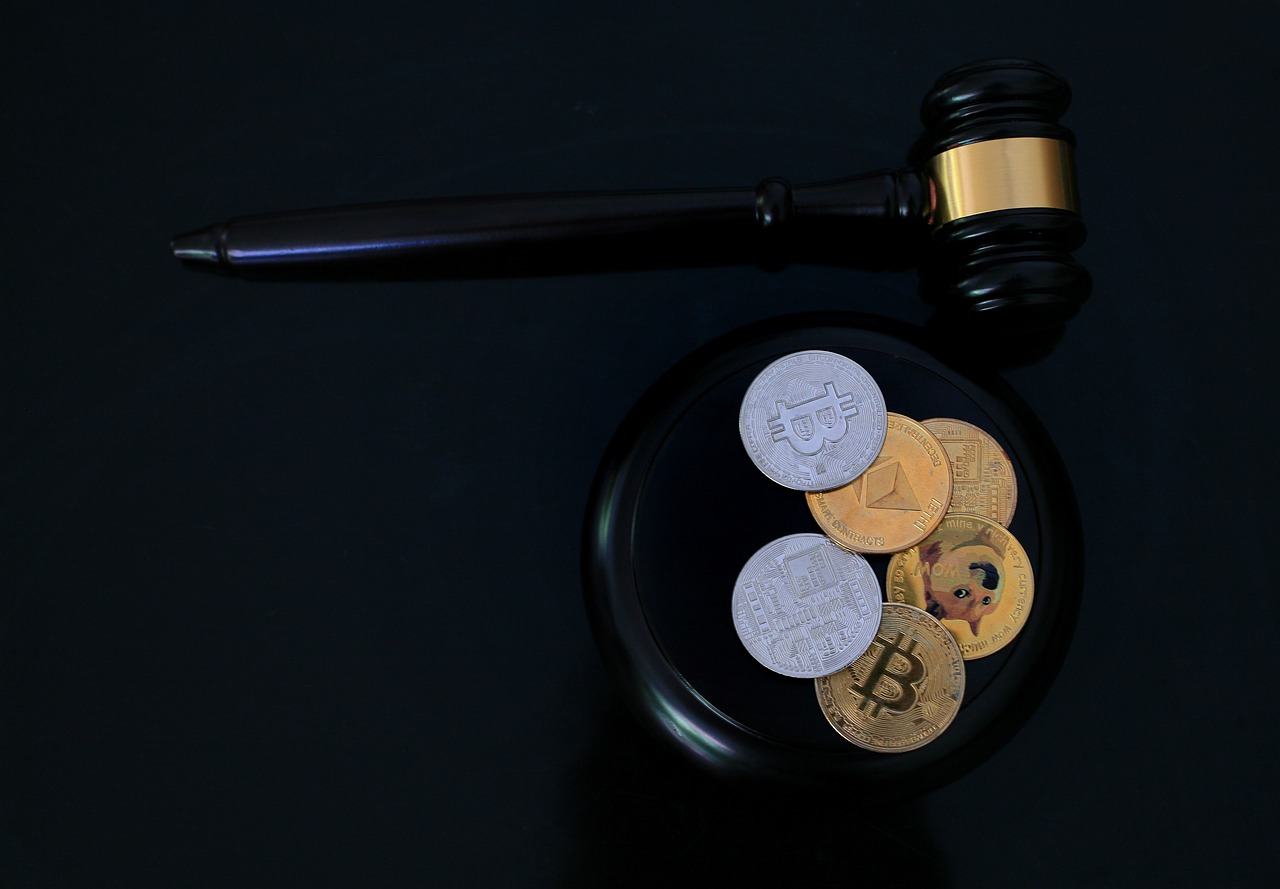
Navigating the Trading Interface
Once you’ve successfully registered on an exchange, the next big step is to familiarize yourself with the trading interface. Think of it as stepping into a new room; at first, it might seem overwhelming, but with a little exploration, you’ll discover where everything is and how it works. The trading interface is your command center, where you’ll execute trades, analyze market trends, and manage your portfolio. So, let’s dive in and break down the essential components that will help you navigate this crucial space with confidence.
First off, you’ll typically encounter a dashboard that presents a variety of information at a glance. This dashboard usually includes market prices, trading pairs, and your current holdings. Understanding how to read this information is key. For example, if you see a trading pair like BTC/USD, it indicates the price of Bitcoin in terms of US dollars. Familiarizing yourself with trading pairs is essential, as they represent the currencies you can trade against each other.
Next, let’s talk about the different order types you’ll find on the trading interface. Each order type serves a specific purpose and can significantly impact your trading strategy. Here’s a quick overview:
| Order Type | Description | When to Use |
|---|---|---|
| Market Order | Buy or sell immediately at the current market price. | When you want to execute a trade quickly. |
| Limit Order | Set a specific price at which you want to buy or sell. | When you want to control the price of your trade. |
| Stop Order | Triggers a market order once a specified price is reached. | When you want to limit potential losses. |
Understanding these order types will help you execute trades more effectively. For instance, a market order is like jumping into a pool without checking the water temperature; you’re going in at the current price, regardless of fluctuations. In contrast, a limit order allows you to set your desired entry point, giving you more control over your trades.
Another crucial aspect of the trading interface is the charting tools. Charts provide visual representations of price movements over time, and they are invaluable for making informed trading decisions. You’ll often find various indicators and overlays that can help you analyze trends. For instance, moving averages can smooth out price data to identify trends, while volume indicators can show how much of a cryptocurrency is being traded over a specific period. Learning to read these charts is akin to learning a new language; it takes time and practice, but once you get the hang of it, you’ll be able to communicate effectively with the market.
As you navigate the trading interface, don’t forget about the trading pairs. Each exchange will have a list of available pairs, and understanding how to switch between them is vital. You might find yourself wanting to trade Bitcoin for Ethereum or vice versa. The interface typically allows you to select your desired trading pair from a dropdown menu, making it easy to switch gears based on market conditions.
Finally, remember that every trading platform has its unique layout and features. Spend some time exploring the interface, clicking on different tabs, and getting a feel for where everything is located. Some platforms even offer demo accounts where you can practice trading without financial risk. This hands-on experience can be incredibly beneficial, allowing you to familiarize yourself with the tools and features before diving in with real money.
- What is a trading interface? A trading interface is the platform where you can view market data, execute trades, and manage your cryptocurrency portfolio.
- How do I read market charts? Market charts display price movements over time; familiarize yourself with basic indicators like moving averages and volume to enhance your analysis.
- What are trading pairs? Trading pairs represent two different cryptocurrencies that can be traded against each other, such as BTC/USD or ETH/BTC.
- Can I practice trading before using real money? Yes, many exchanges offer demo accounts for practicing trading strategies without financial risk.

Order Types Explained
When you dive into the world of trading, understanding order types is crucial. Think of orders as your instructions to the market—like a chef following a recipe to create the perfect dish. Each type of order serves a unique purpose and can significantly impact your trading strategy. Let’s break down the most common order types you’ll encounter: market orders and limit orders.
A market order is the simplest form of trading. When you place a market order, you’re telling the exchange, “Buy or sell my asset at the best available price right now.” It’s like jumping into a pool without checking the temperature—you’re in, and you’re in fast! Market orders are ideal for traders looking to make quick trades without worrying too much about the price fluctuations. However, keep in mind that during periods of high volatility, the price at which your order executes may differ from the last quoted price. This phenomenon is known as slippage.
On the other hand, a limit order allows you to set a specific price at which you want to buy or sell an asset. Imagine you’re at a flea market, and you see a beautiful vintage clock. You wouldn’t want to pay more than $50 for it, right? So, you tell the seller, “I’ll buy it, but only if it’s $50 or less.” That’s essentially how a limit order works. You get to control the price at which you enter or exit a position. This is particularly useful in volatile markets where prices can swing wildly. Limit orders can help you avoid paying more than you intend or selling for less.
Here’s a quick comparison table to illustrate the key differences:
| Order Type | Description | Best Use Case |
|---|---|---|
| Market Order | Buy or sell at the current market price. | When you want to execute a trade immediately. |
| Limit Order | Buy or sell at a specified price or better. | When you want to control the price of your trade. |
In addition to market and limit orders, there are other order types that can be beneficial depending on your trading strategy:
- Stop Order: This order becomes a market order once a specified price is reached. It’s often used to limit losses or protect profits.
- Stop-Limit Order: Similar to a stop order, but it becomes a limit order when the stop price is reached. This gives you more control over the trade execution price.
- Trailing Stop Order: This order moves with the market price and is designed to lock in profits while allowing for potential gains as the market moves in your favor.
Understanding these order types is essential for navigating the trading landscape effectively. Each order type offers different advantages and can be employed strategically based on market conditions and your personal trading goals. So, whether you’re looking to jump in quickly with a market order or set your sights on a specific price with a limit order, knowing how to use these tools can enhance your trading experience.
- What is the difference between a market order and a limit order? A market order executes immediately at the current market price, while a limit order only executes at a specified price or better.
- Can I cancel an order once it’s placed? Yes, most exchanges allow you to cancel open orders before they are executed.
- What happens if the market price doesn’t reach my limit order? If the market price doesn’t reach your limit price, your order will remain open until it is either executed or canceled.

Reading Market Charts
Market charts are the lifeblood of trading; they provide a visual representation of price movements over time, helping traders make informed decisions. If you've ever glanced at a chart and felt overwhelmed, you're not alone! Understanding how to read these charts is crucial for anyone looking to navigate the trading world effectively. Think of market charts as a map; they guide you through the often tumultuous landscape of buying and selling assets.
At the core of any market chart are the price and time axes. The x-axis typically represents time, whether it's in minutes, hours, days, or even years, while the y-axis shows the price of the asset. This setup allows you to see how the price has changed over time. For example, if you were tracking the price of Bitcoin, you'd want to know how its price has fluctuated over the past week, month, or year. The patterns that emerge can tell you a lot about market trends.
There are various types of charts you might encounter, including:
- Line Charts: These are the simplest form of charts, connecting closing prices over a specific period. They give a quick overview of price trends.
- Candlestick Charts: These provide more information than line charts, showing opening, closing, high, and low prices for a specific time frame. Each "candlestick" represents a time period, and its color can indicate whether the price went up or down.
- Bar Charts: Similar to candlestick charts, these show high, low, opening, and closing prices, but in a different format.
Understanding these chart types is just the beginning. You also need to familiarize yourself with various indicators that can help you interpret market movements. For instance, moving averages can smooth out price data to identify trends, while Relative Strength Index (RSI) can indicate whether an asset is overbought or oversold. By combining these indicators with your chart analysis, you can better predict future price movements.
Moreover, don't overlook the importance of volume displayed on the charts. Volume indicates how many units of an asset were traded during a specific period, and it can provide insight into the strength of a price movement. For example, a price increase accompanied by high volume suggests strong buying interest, while a price increase with low volume might indicate a lack of conviction among traders.
To summarize, reading market charts is an essential skill for any trader. By understanding the axes, familiarizing yourself with different chart types, and utilizing indicators and volume data, you can make more informed trading decisions. Remember, just like any skill, practice makes perfect. The more you engage with charts, the more intuitive they will become. So, grab your favorite trading platform, start analyzing charts, and watch your trading skills soar!
Q: What is the best type of chart for beginners?
A: Line charts are often the easiest for beginners to understand, as they provide a clear view of price trends without overwhelming details.
Q: How do I know which indicators to use?
A: Start with a few basic indicators like moving averages and RSI. As you gain more experience, you can explore more complex indicators.
Q: Can I use charts for day trading?
A: Absolutely! Many day traders rely heavily on charts to make quick decisions based on short-term price movements.
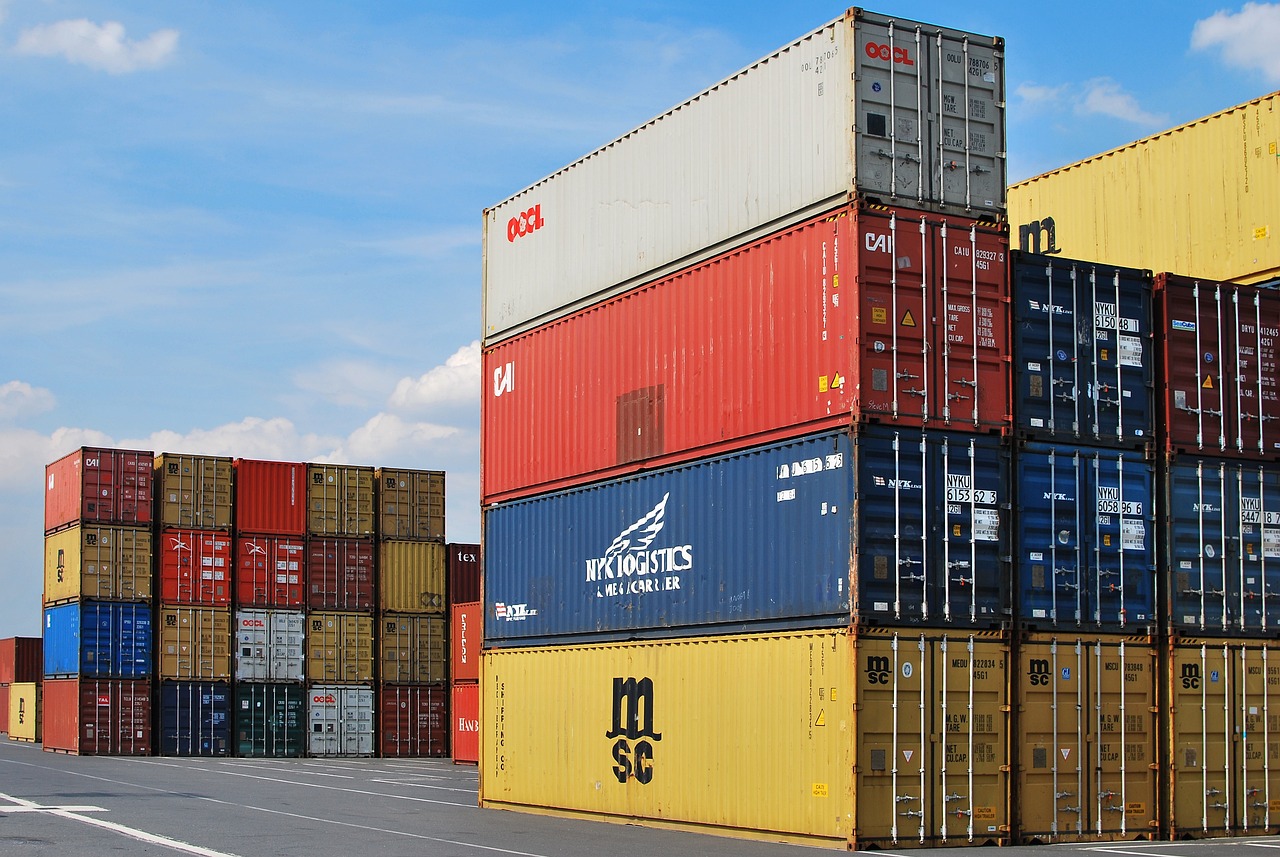
Executing Trades
Executing trades is the heart of any trading platform, and understanding how to do it efficiently can be the difference between a successful trade and a costly mistake. When you finally decide to dive into the world of cryptocurrency trading, you'll find that placing trades is not just about clicking a button; it involves strategy, timing, and a bit of finesse. Have you ever thought about how a skilled chef knows exactly when to flip a pancake? Similarly, knowing when to execute a trade can make all the difference in your trading journey.
To successfully execute trades, you need to familiarize yourself with the trading interface of your chosen exchange. Most platforms will present you with various options, including the ability to place market orders and limit orders. Each order type serves a different purpose and can help you achieve your trading goals more effectively. For instance, a market order is like a fast-food drive-thru; you get your order immediately at the current price. In contrast, a limit order is more like a gourmet meal where you set the price you’re willing to pay or receive, allowing you to control your trade execution.
Let’s break down the execution process into manageable steps:
- Choose Your Trading Pair: Before placing a trade, you need to select the trading pair that you want to work with, such as BTC/USD or ETH/BTC. This is akin to deciding which ingredients you’ll use in your recipe.
- Decide on Order Type: Will you use a market order for immediate execution, or a limit order for more control? Each has its own benefits and can be used strategically depending on market conditions.
- Enter the Amount: Specify how much of the asset you want to buy or sell. This is your portion of the recipe, and it should be well thought out based on your trading strategy.
- Review and Confirm: Always double-check your order details before hitting that confirm button. It’s like proofreading your recipe to avoid any disastrous results!
Once you’ve placed your order, it’s essential to monitor its status. Some trades may execute instantly, while others may take time, especially if you’re using limit orders. It’s crucial to stay informed about market trends and price movements that could affect your trade. Think of it as watching the oven while your dish cooks; you want to ensure everything is going according to plan.
Moreover, timing your trades can be just as critical as the execution itself. The cryptocurrency market is notoriously volatile, and prices can swing dramatically within seconds. Therefore, staying updated with real-time market data can help you make informed decisions. Many exchanges provide tools and charts that can aid in analyzing price movements, which is invaluable for executing trades effectively.
In summary, executing trades requires a blend of knowledge, strategy, and real-time decision-making. By understanding the different order types and staying vigilant about market conditions, you can enhance your trading experience and potentially increase your profitability. Just remember, trading is not a sprint; it’s more of a marathon where patience and strategy can lead to success.
- What is the difference between market and limit orders? Market orders execute immediately at the current market price, while limit orders allow you to set a specific price for buying or selling.
- How can I track my trades? Most exchanges provide a dashboard where you can view your active and completed trades, along with their status.
- Can I cancel a trade after placing it? Yes, if your order is a limit order and hasn’t been executed yet, you can usually cancel it before it goes through.

Placing Market Orders
When it comes to trading on an exchange, placing a market order is one of the most straightforward and commonly used methods. Think of a market order like waving a magic wand; you want to buy or sell something at the current market price without any fuss. This type of order is executed immediately, allowing you to take advantage of the current price without waiting for a specific target. But how does it work? Let’s break it down.
To place a market order, you simply need to select the asset you wish to trade, specify the amount, and hit the "buy" or "sell" button. It’s as easy as ordering a pizza online! However, it’s essential to understand that while market orders are quick, they come with their own set of risks. For instance, if the market is particularly volatile, the price at which your order is executed may differ from the price you initially saw. This phenomenon is known as slippage.
Here's a quick rundown of how to place a market order:
- Select Your Trading Pair: Choose the cryptocurrency you want to buy or sell.
- Enter the Amount: Specify how much of the asset you wish to trade.
- Execute the Order: Click the "buy" or "sell" button to place your market order.
While market orders are fantastic for getting in and out of trades quickly, they are best suited for situations where speed is more critical than price precision. For example, if you're trying to capitalize on a sudden price spike or drop, a market order can be your best friend. However, if you have a specific price in mind, you might want to consider using a limit order instead, which allows you to set a price at which you want your order to be executed.
To help you better understand the concept of market orders, let’s take a look at a simple example:
| Scenario | Market Order Price | Expected Execution Price |
|---|---|---|
| Buying Bitcoin during a price surge | $60,000 | $60,100 (due to slippage) |
| Selling Ethereum in a market dip | $2,000 | $1,950 (due to slippage) |
In the examples above, you can see how slippage can affect your trading outcomes. It’s crucial to be aware of this, especially in fast-moving markets. So, while placing a market order is quick and convenient, always keep an eye on the market conditions to ensure you’re making the most informed decision possible.
In summary, market orders are a powerful tool for traders who value speed and efficiency. Just remember to weigh the risks, especially during volatile market conditions. Now that you have a better understanding of placing market orders, you can confidently navigate your trading journey!
- What is a market order? A market order is a request to buy or sell an asset at the current market price.
- When should I use a market order? Use a market order when you want to execute a trade immediately and are less concerned about the exact price.
- What is slippage? Slippage occurs when the execution price of a market order differs from the expected price, often due to market volatility.
- Can I cancel a market order? No, once a market order is placed, it cannot be canceled as it is executed immediately.

Using Limit Orders
When it comes to trading on an exchange, limit orders are a powerful tool that can help you take control of your trades. Unlike market orders, which execute immediately at the current market price, limit orders allow you to specify the exact price at which you want to buy or sell an asset. This means you can set your entry and exit points, giving you more flexibility and potentially better profits. Imagine you're at a market, and you see a beautiful painting you want to buy, but you only want to pay a specific price. Instead of grabbing it immediately at the current price, you tell the seller, "I'll buy it if you drop the price to $100." This is essentially how a limit order works!
To place a limit order, you'll need to follow a few simple steps. First, navigate to the trading interface of your chosen exchange. Look for the section where you can enter your order details. Here, you will typically find fields for the amount of cryptocurrency you want to buy or sell and the price at which you want to execute the trade. Once you've entered this information, you can submit your limit order.
One of the biggest advantages of using limit orders is that they can help you manage your risk. By setting a limit price, you can avoid buying at a peak price or selling at a low price, which is crucial in a volatile market. However, it’s important to note that while limit orders can protect you from unfavorable prices, they come with their own set of challenges. For instance, if the market price never reaches your limit price, your order will remain unfilled, which means you could miss out on potential trading opportunities.
Here are a few key points to consider when using limit orders:
- Market Conditions: Always be aware of the market conditions. If the market is highly volatile, your limit order might not get filled.
- Order Duration: Most exchanges allow you to specify how long your limit order remains active. You can set it to expire after a certain period or keep it open until it's filled.
- Partial Fills: Sometimes, your limit order may only be partially filled. This means that only a portion of your order was executed at your specified price.
In conclusion, limit orders are an essential tool for any trader looking to optimize their strategy. They provide a way to take charge of your trades, manage risk, and execute transactions at your desired price. Just remember to stay informed about market trends and adjust your orders as needed to ensure you’re making the most out of your trading experience.
Q: What is the difference between a limit order and a market order?
A: A limit order allows you to set a specific price for buying or selling an asset, while a market order executes immediately at the current market price.
Q: Can I cancel a limit order?
A: Yes, most exchanges allow you to cancel limit orders as long as they haven't been filled yet.
Q: What happens if my limit order is not filled?
A: If the market price never reaches your limit price, your order will remain unfilled until it expires or you cancel it.
Q: Are there any fees associated with limit orders?
A: Generally, the same trading fees apply to limit orders as to market orders, but it's always good to check the fee structure of your chosen exchange.

Understanding Fees and Costs
When diving into the world of cryptocurrency trading, one of the most crucial aspects to grasp is the fees and costs associated with exchanges. Just like a hidden current in a river, these costs can sneak up on you, affecting your overall profitability. Different exchanges have varying fee structures, and understanding these can save you a lot of money in the long run. So, what exactly should you be looking for?
Exchanges typically charge several types of fees, which can include:
- Trading Fees: These are fees charged for executing trades, and they can vary widely between platforms. Some exchanges charge a flat fee per trade, while others implement a tiered structure based on your trading volume.
- Withdrawal Fees: Whenever you transfer your cryptocurrency from the exchange to your wallet, you may incur a withdrawal fee. This fee can be a fixed amount or a percentage of the total withdrawal.
- Deposit Fees: Some exchanges may charge fees for depositing funds, especially if you're using credit cards or other payment methods.
To give you a clearer picture, here’s a simple breakdown of common fee structures:
| Exchange Type | Trading Fee | Withdrawal Fee | Deposit Fee |
|---|---|---|---|
| Centralized Exchange | 0.1% - 0.5% | $0.01 - $5.00 | Varies (0% - 3%) |
| Decentralized Exchange | 0.2% - 1% | Gas fees vary | Usually free |
| Hybrid Exchange | 0.1% - 0.3% | $0.05 - $2.00 | Varies (0% - 2%) |
As you can see from the table, the fees can differ significantly based on the type of exchange you choose. Therefore, it’s vital to compare these costs before committing to a platform. Another important factor is how these fees are calculated. Some exchanges might have hidden fees that are not immediately apparent, so always read the fine print!
Now, let’s talk about strategies to minimize these costs. One effective approach is to look for exchanges that offer fee discounts for using their native tokens. For example, Binance users can use BNB to pay for trading fees at a discounted rate. Additionally, consider the frequency of your trades. If you’re a frequent trader, even a small difference in trading fees can add up quickly, so choosing an exchange with lower fees might be more beneficial.
In conclusion, understanding the fees and costs associated with cryptocurrency exchanges is not just about knowing how much you’ll pay; it’s about making informed decisions that can enhance your trading experience and maximize your profits. By doing your homework and comparing different platforms, you can navigate the waters of trading with confidence.
1. What are trading fees?
Trading fees are charges applied when you execute a buy or sell order on an exchange. They can be a flat fee or a percentage of the trade amount.
2. How can I reduce withdrawal fees?
To minimize withdrawal fees, consider withdrawing larger amounts less frequently, as many exchanges have a fixed fee structure. Additionally, check if the exchange has any fee-free withdrawal options.
3. Are there any exchanges with no fees?
While some exchanges advertise zero trading fees, they often compensate for this through other means, such as higher spreads or withdrawal fees. Always read the terms carefully.
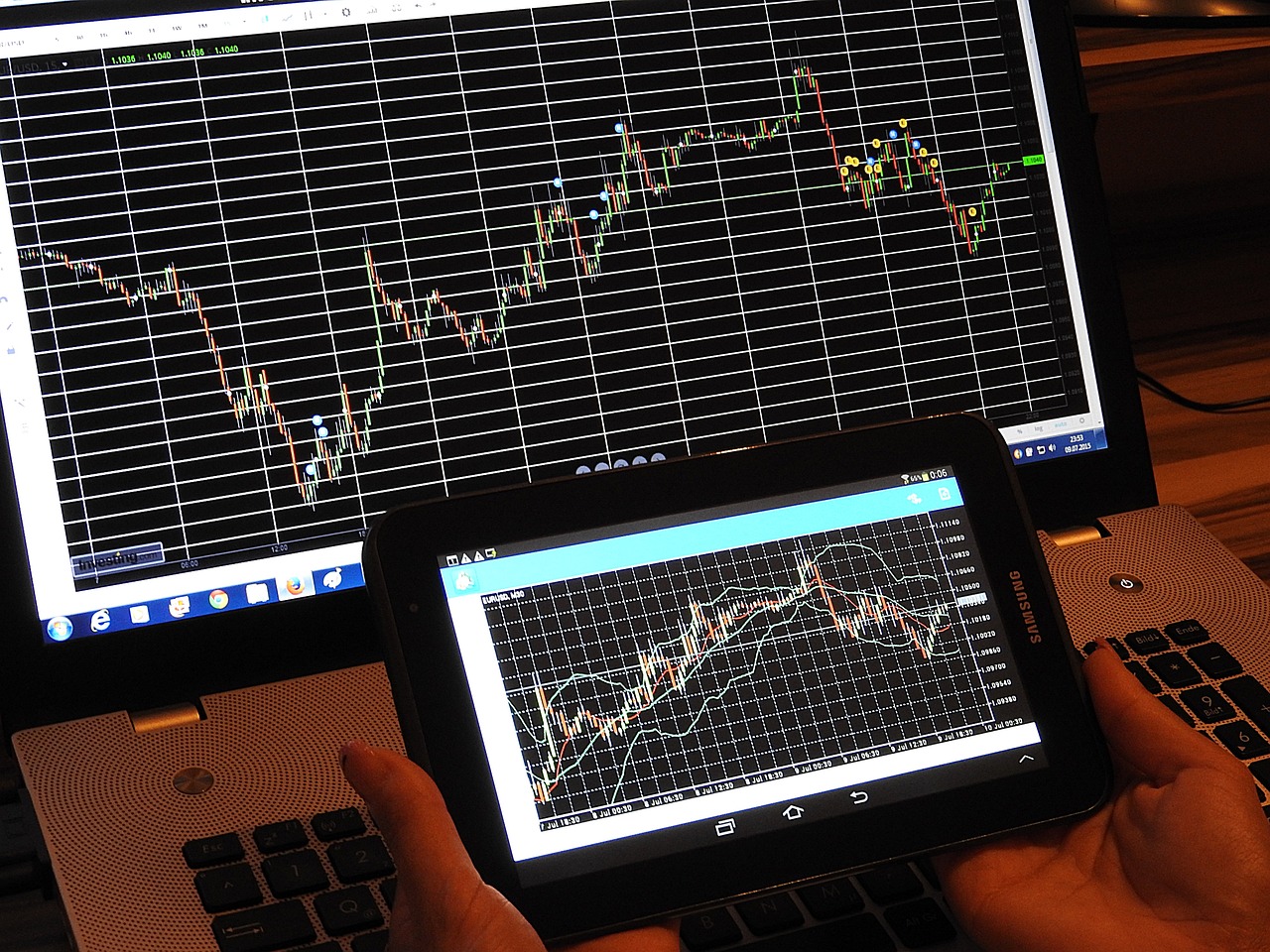
Trading Fees Overview
When diving into the world of cryptocurrency trading, one of the **most critical aspects** to understand are the trading fees associated with each exchange. These fees can significantly affect your overall profitability, especially if you're an active trader. Imagine you’re at a carnival, and each ride you want to go on charges you a ticket. The more rides you take, the more tickets you need. Similarly, the more trades you execute, the more fees you’ll incur.
Trading fees can vary widely from one exchange to another, and they typically fall into a few categories:
- Maker Fees: These fees are charged when you add liquidity to the market by placing a limit order that isn’t immediately matched.
- Taker Fees: Conversely, taker fees apply when you remove liquidity by placing an order that is immediately matched with an existing order.
- Flat Fees: Some exchanges may charge a flat fee for every trade regardless of the order type.
- Percentage Fees: Many exchanges charge a percentage of the total transaction amount.
To give you a clearer picture, let’s take a look at a simple comparison table of trading fees across popular exchanges:
| Exchange | Maker Fee | Taker Fee | Flat Fee |
|---|---|---|---|
| Exchange A | 0.10% | 0.20% | N/A |
| Exchange B | 0.15% | 0.25% | N/A |
| Exchange C | N/A | N/A | $0.50 |
As you can see from the table, different exchanges have different fee structures, and it's essential to do your research. You don’t want to end up on an exchange that charges exorbitant fees that eat into your profits. Think of it like shopping for groceries; you wouldn’t want to pay $5 for a loaf of bread when you can get it for $2 at another store.
Moreover, some exchanges offer discounts on trading fees based on the volume of trades you execute over a specific period. If you’re a high-volume trader, this can significantly reduce your costs. Always check if the exchange has a tiered fee structure that rewards frequent traders.
In conclusion, understanding trading fees is not just about knowing the numbers; it's about strategically selecting the right platform that aligns with your trading habits. By doing so, you can keep more of your hard-earned profits and make the most out of your trading experience.
Q1: What are trading fees?
Trading fees are charges applied by exchanges for executing trades. They can vary based on the order type and the exchange's fee structure.
Q2: How can I minimize trading fees?
You can minimize trading fees by choosing exchanges with lower fees, taking advantage of fee discounts for high-volume trading, and using limit orders when possible.
Q3: Are trading fees the same for all exchanges?
No, trading fees vary significantly from one exchange to another, so it's important to compare them before choosing where to trade.
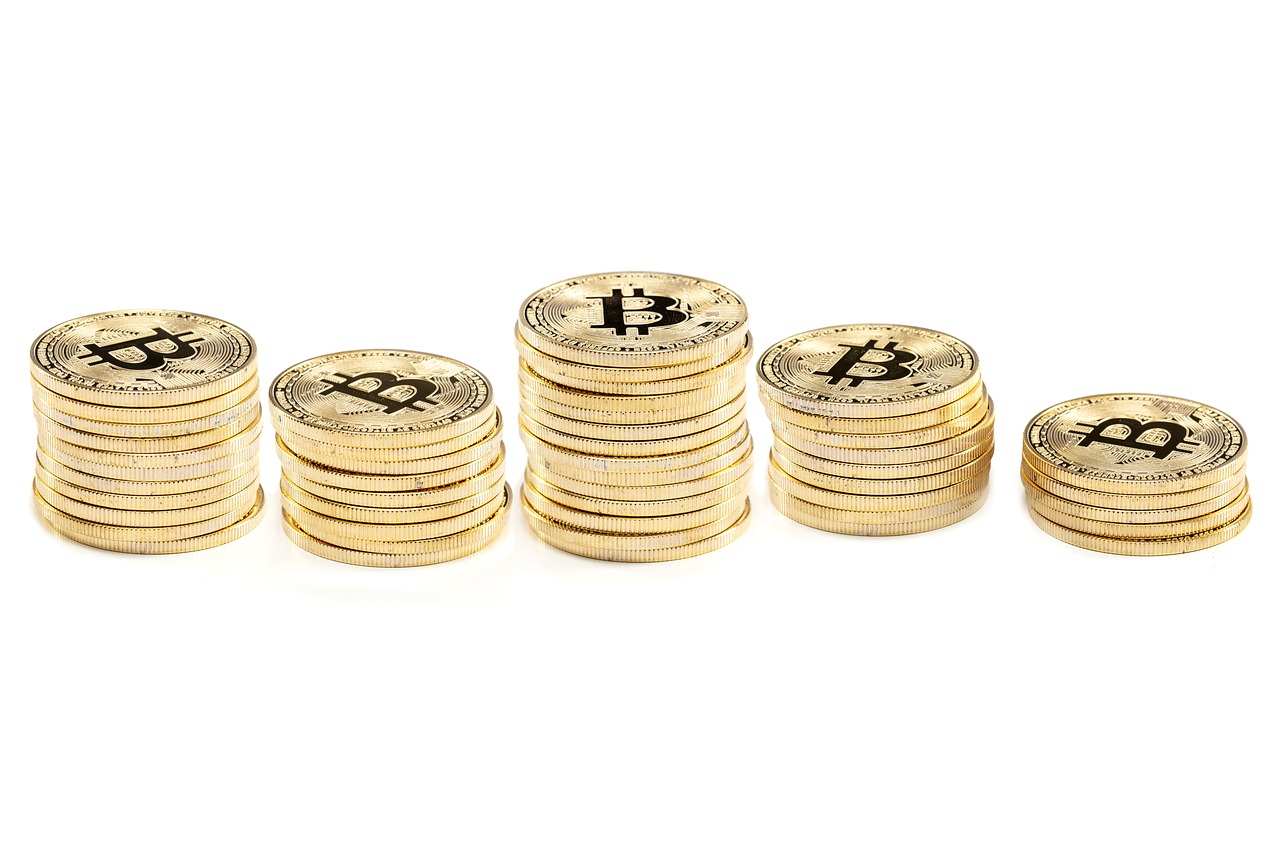
Withdrawal Fees
When you decide to trade cryptocurrencies, understanding is crucial for managing your overall profitability. These fees can significantly impact your bottom line, especially if you're frequently transferring funds out of your exchange account. Think of withdrawal fees as the tolls you pay on a highway; they can add up quickly and affect your journey. Different exchanges have varying fee structures, and knowing these can help you make informed decisions about where to trade.
Typically, withdrawal fees are charged per transaction and can vary based on the cryptocurrency you are withdrawing. For instance, Bitcoin withdrawals might incur a different fee compared to Ethereum or Litecoin. Here’s a quick overview of how withdrawal fees might look across various popular exchanges:
| Exchange | Bitcoin Withdrawal Fee | Ethereum Withdrawal Fee | Litecoin Withdrawal Fee |
|---|---|---|---|
| Exchange A | 0.0005 BTC | 0.01 ETH | 0.001 LTC |
| Exchange B | 0.0003 BTC | 0.005 ETH | 0.0005 LTC |
| Exchange C | 0.0004 BTC | 0.008 ETH | 0.0008 LTC |
As you can see from the table, withdrawal fees can vary significantly from one exchange to another. Therefore, it’s essential to consider these fees when choosing a platform. You wouldn't want to find yourself in a situation where a seemingly cheap trading platform turns out to be expensive when it comes to withdrawals.
Moreover, some exchanges offer fee discounts or even zero withdrawal fees for specific cryptocurrencies or under certain conditions. For example, if you hold the exchange's native token, you might be eligible for reduced fees. Always check the exchange's fee schedule before making any decisions.
In addition to the flat fees, be aware of network fees that are charged by the blockchain itself. These fees are not controlled by the exchange and can fluctuate based on network congestion. It’s like a busier highway during rush hour; the more traffic there is, the higher the tolls. Keeping an eye on these network fees can help you time your withdrawals for when they are lower.
In conclusion, understanding withdrawal fees is not just about knowing the numbers; it’s about strategic planning. By factoring in these costs, you can make smarter trading decisions and ultimately enhance your cryptocurrency trading experience. Always remember: the less you pay in fees, the more you keep in your pocket!
- What are withdrawal fees? Withdrawal fees are charges imposed by exchanges when you transfer your cryptocurrencies from their platform to an external wallet.
- Do all exchanges have withdrawal fees? No, not all exchanges impose withdrawal fees. Some may offer promotions or have specific conditions under which withdrawals are free.
- How can I minimize withdrawal fees? You can minimize withdrawal fees by choosing exchanges with lower fees, timing your withdrawals during low network congestion, or using the exchange’s native tokens for fee discounts.
Frequently Asked Questions
- What types of exchanges are available for trading?
There are mainly three types of exchanges: centralized, decentralized, and hybrid. Centralized exchanges are managed by organizations that facilitate trading, while decentralized exchanges allow peer-to-peer trading without intermediaries. Hybrid exchanges combine features of both, offering the benefits of centralized security with decentralized control.
- How do I create an account on an exchange?
Creating an account typically involves visiting the exchange's website and filling out a registration form. You'll need to provide personal information and go through an identity verification process to ensure security. This often includes uploading identification documents like a passport or driver’s license.
- What is the verification process like?
The verification process varies by exchange but usually requires submitting identification documents and proof of address. After submitting your documents, the exchange will review them, which can take anywhere from a few minutes to several days. Completing this step is crucial for ensuring the safety of your funds.
- What security measures should I enable?
To enhance your account security, it's highly recommended to enable two-factor authentication (2FA). This adds an extra layer of protection by requiring a second form of verification, usually a code sent to your mobile device, in addition to your password.
- What types of wallets can I use for storing cryptocurrency?
There are two main types of wallets: hot wallets and cold wallets. Hot wallets are connected to the internet and are more convenient for trading, while cold wallets are offline and provide greater security for long-term storage. Choosing the right wallet depends on your trading style and security needs.
- How do I navigate the trading interface?
Once registered, familiarize yourself with the trading interface. Look for features like charts, order types, and trading pairs. Understanding these elements will help you make informed trading decisions and execute trades more effectively.
- What are market and limit orders?
Market orders allow you to buy or sell cryptocurrency at the current market price, making them ideal for quick trades. Limit orders, on the other hand, let you set a specific price for buying or selling, giving you more control over your trades and helping you manage risk.
- What fees should I be aware of when trading?
Exchanges usually charge trading fees, which can vary widely. It's essential to check the fee structure of your chosen platform. Additionally, be aware of withdrawal fees, which can impact your overall profitability. Understanding these costs will help you make more strategic trading decisions.
- How can I minimize trading costs?
To minimize costs, look for exchanges with lower trading fees and consider using limit orders to control your entry and exit prices. Additionally, consolidating withdrawals can help reduce withdrawal fees, making your trading experience more cost-effective.



















